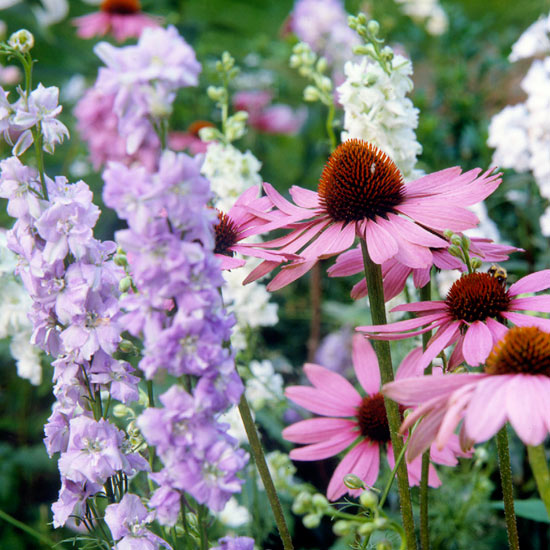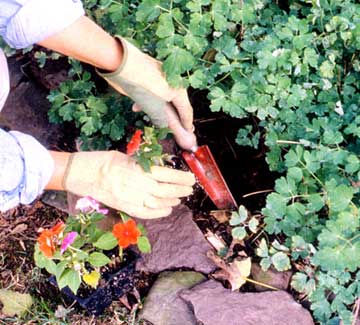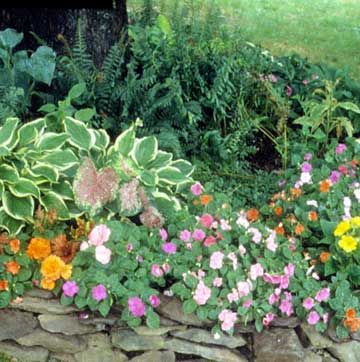
After a period of gradually acclimating to the wind and sun outdoors, young plants are ready to go into the garden. This process can be traumatic for the plants, so try to choose an overcast day or wait until late in the day to plant. This spares the seedlings extra stress from bright sun while they cope with the inevitable transplant shock. Their adjustment is much easier, too, if their new soil is loosened, moist, and reasonably warm.
Soil is important to your seedlings; learn the basics and more here.
continue reading below
Instructions:
- Dig a hole for each seedling about the size of its pot. Tip each plant from its container, tapping the bottom to dislodge it if necessary. If its roots are encircling the root ball -- because of being confined in the pot too long -- loosen them by hand or cut vertical slits in the root ball.
- Set each plant in a hole at the same depth that it grew in its pot. Then gently but firmly press the loose soil around the plant to seat it in the ground and force out any air pockets, and sprinkle with tepid water. After a week, water the new transplants with water-soluble plant food mixed at half the strength recommended on the label.
- Set small plants in rows to edge beds. Screen an undesirable view with a row of tall plants. Plant flowers in rows for convenient cutting.

- Ornamental plants make an impact when grouped. Odd-numbered clusters work best -- three large plants or up to nine small ones per group.

- Tuck young transplants into existing beds among flowers that require the same amount of light and water. Do not crowd them.
Spacing Plants
One way to avoid problems as seedlings mature into full-sized plants is to allow sufficient space between them when planting. Although the garden may seem bare at first, giving plants the room to grow without being crowded ensures good air circulation, which deters diseases. Mulch the bare soil between small plants to discourage weeds from filling the space while the seedlings grow.
Aftercare:
- Water newly-transplanted flowers and vegetables every day or two in warm weather until their roots grow deeper in the soil. When they show new stem and foliage growth, you'll know that their roots are established properly.
- Spread a 2-inch layer of organic material on the bare soil between the young plants. This mulch will discourage weeds and help keep the soil moist.
- Pull any weeds that appear in the planting area. They compete for water and soil nutrients.
- Early in the season watch for unexpected temperature drops. Have polyspun garden fabric handy to cover the transplants if frost threatens.
- Insert stakes into the soil or erect trellises for plants that will need support.
- Inspect plant foliage regularly for insects or disease. Pinch off tender plant tips, if necessary, to eliminate clusters of aphids.
- As transplants mature, pinch off stem tips to increase side branching and compactness.
Choosing Nursery-Grown Plants:
- Purchase plants at a reputable nursery or garden center, where they're likey to receive the best care.
- Buy early when the plants are fresh and young.
- Check for moist soil and perky foliage to determine that the plants have been properly cared for.
- Choose plants that are compact and stocky, with firm stems. This means they've received good light.
- Look for leaves that are a rich green and free from discolored spots or signs of insects.
- Examine the plant's roots by slipping it from its pot. The roots should be well-developed throughout the potting mix but not tightly tangled or trailing out of the bottom hole of the pot.
- Select plants that are in bud but not fully flowering. Younger plants transplant more successfully than older ones.
- Check to be sure that all the plants in a market pack or flat are healthy.
Cheap and Easy Seedling Pots: Use Newspaper
Cheap and Easy Seedling Pots: Use Newspaper








